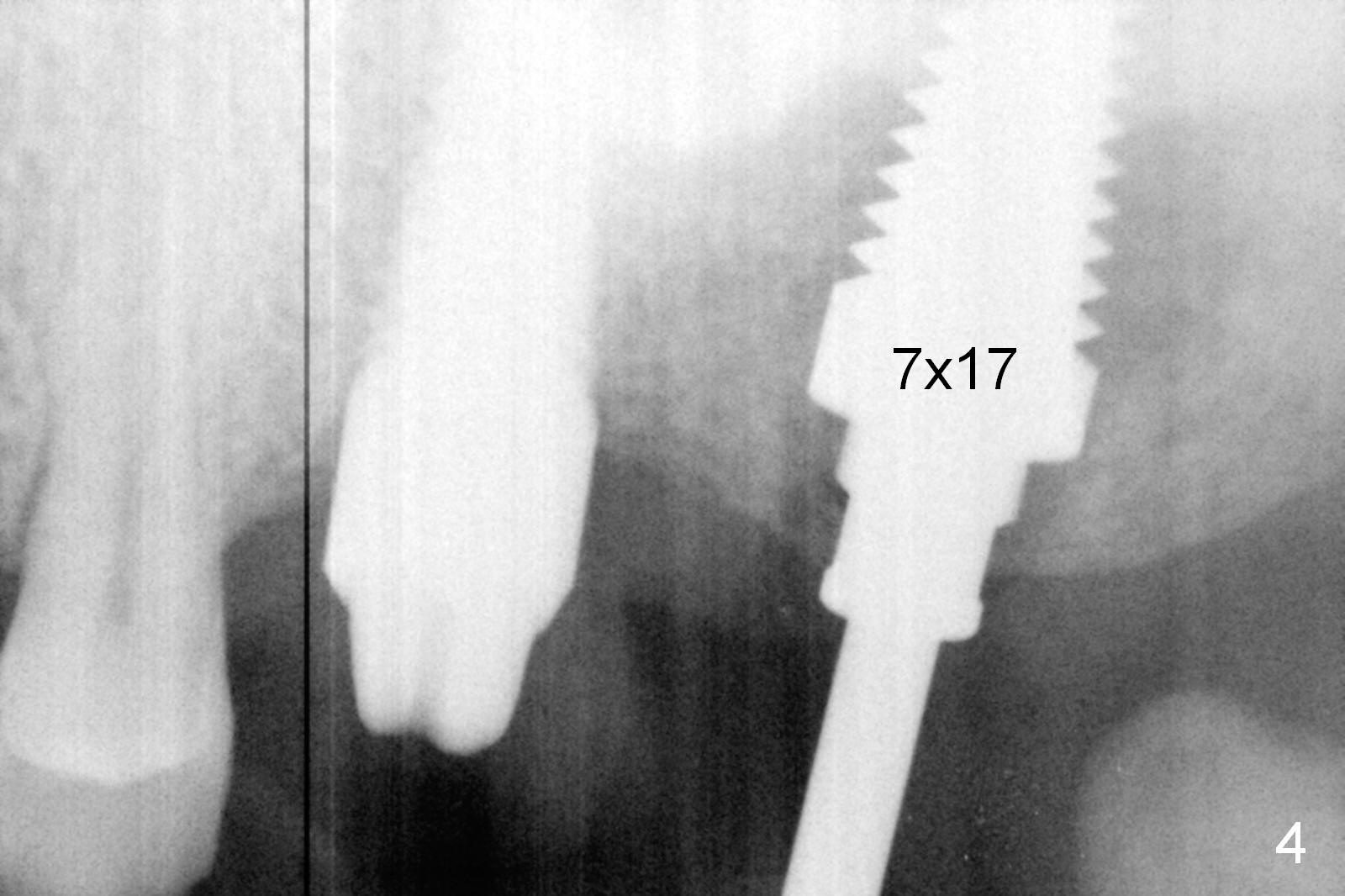
 |
Bone density is high, as it is difficult to use osteotomes to form osteotomy. Drill/reamers and taps (Fig.4) are used alternatively to achieve primary stability. The socket is 17 deep (osteotomy 20 mm), while the longest Tatum tapered gingiva-level implant is 17 mm, SM and UF (bone-level) 10 and 12 mm. Finally a 7x12 mm UF implant is placed (Fig.5).
When bone density is high, use drills at 50 RPM to enlarge osteotomy and at the same time to collect autogenous bone. DIO implant drills have stopper. It is safe to form osteotomy in the deep socket and the most posterior area. Use taps is not efficient. The larger tap may have difficulty in reaching the most apical region.
When density is low, taps may have advantage of condensing the bone.
In fact there are 20 mm Tatum cylindrical implants with diameter of 7 and 8 mm. The 7 mm one should be appropriate for this case.
Conjoined Provisional Last Next
Xin Wei, DDS, PhD, MS 1st edition 06/30/2016, last revision 12/16/2018